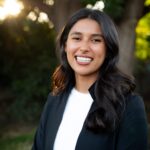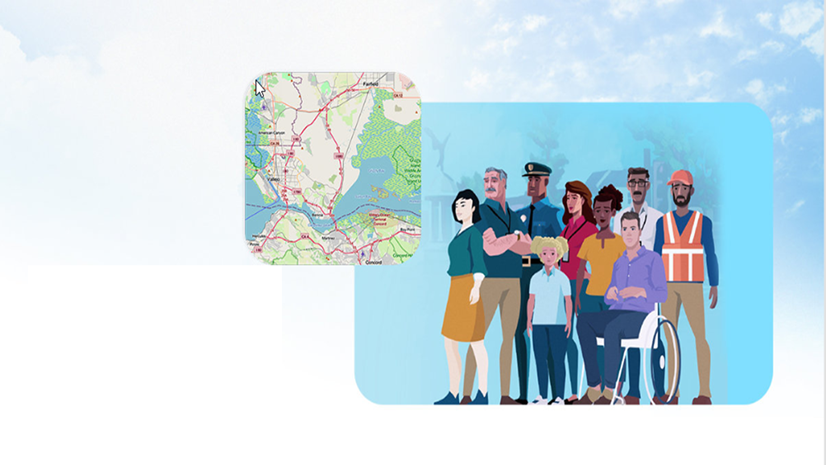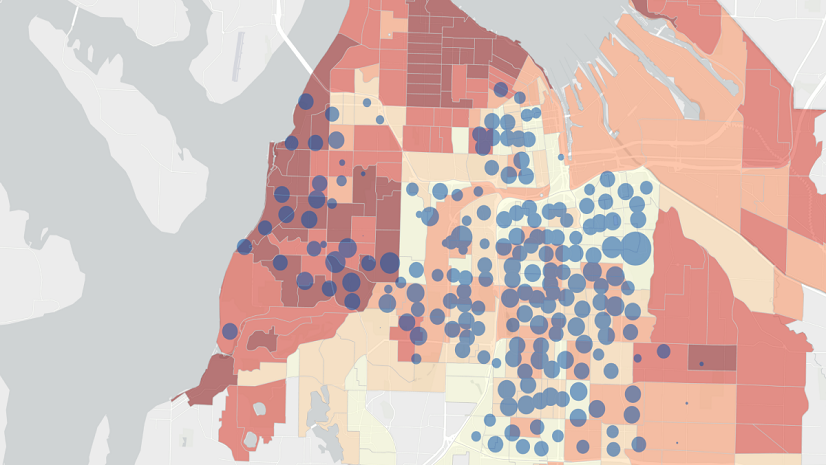On May 8th Esri hosted an Equity and Social Justice Seminar at our Regional Office in Olympia, WA. We had over 40 customers in attendance and a full day of programing. The agenda featured Esri staff and leading equity users. We started the day by hearing opening remarks from Regional Manager Matthieu Denuelle. Matthieu spoke about how GIS enables equity practitioners to make critical decisions in their community and that Esri has a team to support our users in this space. Then I presented our common themes of successful equity customers:
- develop a relationship between equity practitioners and GIS staff
- embed equity into their jurisdiction wide plans
- make their data accessible and transparent to the public
- have a plan to work collaboratively with community organizations and nonprofits.

Additionally, I touched on our new messaging around economic mobility and how users are putting a greater emphasis on utilizing GIS to enhance economic mobility in their communities.

Takeaway 1: Updated Language, Transitioning Language
Caitlyn McNabb, Director of Innovation and Performance, and Anisha Govindankutty, Statewide Spatial Equity Analyst, from the Washington Office of Equity presented, “Innovating a Washington For All”. They focused on how the office is updating their language of presenting equity to the public. They will remain the Office of Equity but their outreach material will focus on how equity really means that they are working for all Washingtonians regardless of status, demographics or ability. They are currently working on a new hub site which will be a central repository for all things equity, data and community engagement for the state of Washington. The hub site is set to be released by January 2026. They shared that the mission of the office of equity is to “promote equitable access to opportunities, power, and resources across government that reduce disparities and improve outcomes statewide.” They also talked about how equity is spatial and depending on where you live your community may need different solutions. “Before we target solutions and strategies, we must understand the community conditions across our statewide impact areas”

Takeaway 2: Community Engagement
King County was represented by Mary Ullrich, Senior GIS Specialist, and Harkeerat Kang, Principal IT Engineer, and they both shared the extensive work the County has done on Developing Data-Driven Determinants of Equity Tool. The interactive storymap is publicly available and allows anyone to explore the 15 determinants of equity. Previously only available in a static report, the Determinants of Equity report was created in 2015, identifies 15 conditions, allowing for a greater level of understanding. Not only does the storymap make the data available to the public but it allows policy makers to have a better understanding of equity when making decisions.

Takeaway 3: Defining Equity in Your Jurisdiction, All Indexes Will Change with Their Locality
As the day continued, attendees asked how jurisdictions define equity? The state, county and neighboring cities may define equity differently. Christina Chelf, GIS Manager at City of Tacoma, shared how the creation of the Equity Index took time, community input, council designation and department buy-in. The City of Tacoma began talking about equity in 2014 and in 2020 the city began plans to create equity action plans across departments. Now in 2025, the City of Tacoma has a large number of case studies across departments. The key points they shared were
- Stories Make Equity Real
- Local Wins Inspire Broader Change
- Storytelling Builds Trust
- Sharing Stories Creates More Stories

In addition to customer presentations, Esri solution engineer Shannon Stern discussed how Esri tools can be utilized for community engagement. She demonstrated the new ArcGIS Survey123 AI beta tool, gave a demo on how to create a hub site and walked the audience through how to use the Social Equity Analysis Solution. To see a live demo on the Social Equity Analysis tool you can check out this webinar.
Takeaway 4: It Doesn’t Have to Be Perfect, You Just Need to Get Started
Throughout the day, each presenter emphasized that sometimes you need to start without waiting for perfection. We heard about three jurisdictions tackling equity in their communities, each with a unique approach suitable for them. What echoed throughout each presentation though was the central theme of equity which is to help people. An example that was talked about during the day was the use of sidewalks and easements. While not everyone may need one to walk along the street, when they exist, they benefit everyone. From having a safe place to walk separate from cars to parents pushing strollers to folks who are in wheelchairs, they benefit the entire community. Equity is about helping people who need help. All of the presenters said you can get started and then get a pulse from the community if you are going in the right direction. It is not about asking why we are doing this for one group but looking at the benefit for all.
Thank you to everyone who joined us at the Olympia Equity and Social Justice Seminar and made it a great success! If you would like to connect with our team and stay up-to-date on our seminar series and the latest happenings for GIS and equity, please join our LinkedIn Group – Esri Equity and Social Justice Group. Our next seminar in the series is scheduled for September 25 in Minneapolis, MN. If you are in the region, please mark your calendars! More details and the registration page coming soon!




